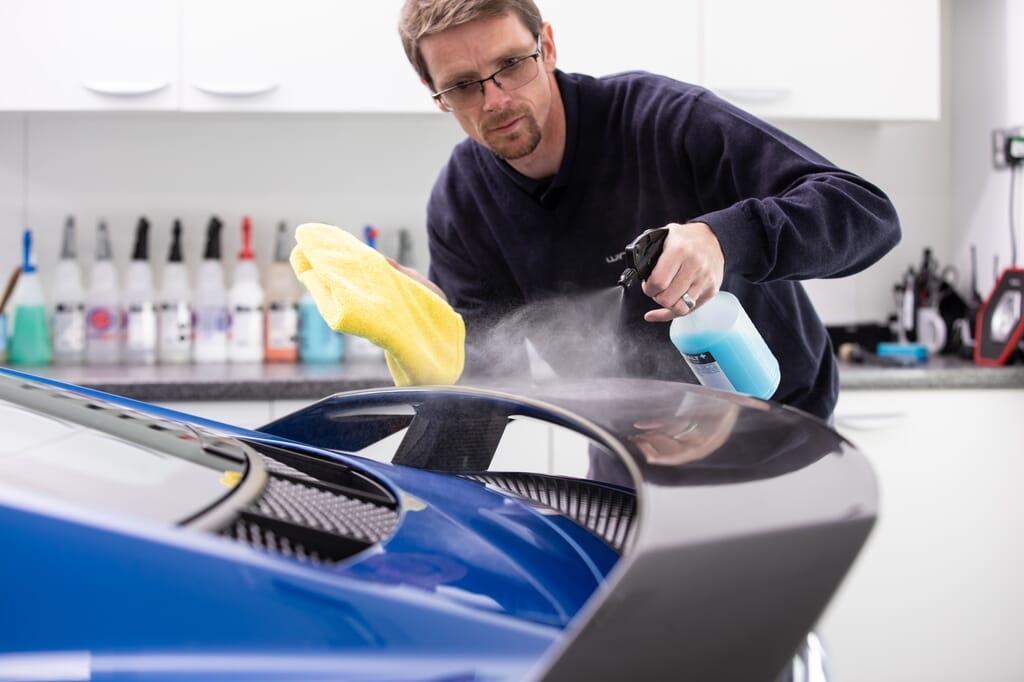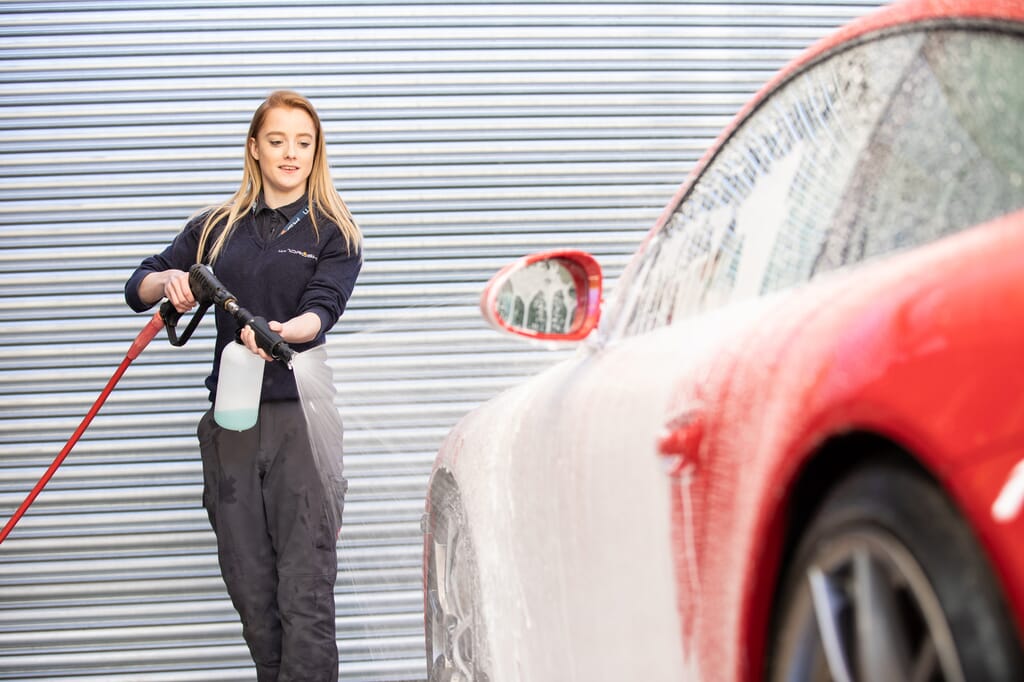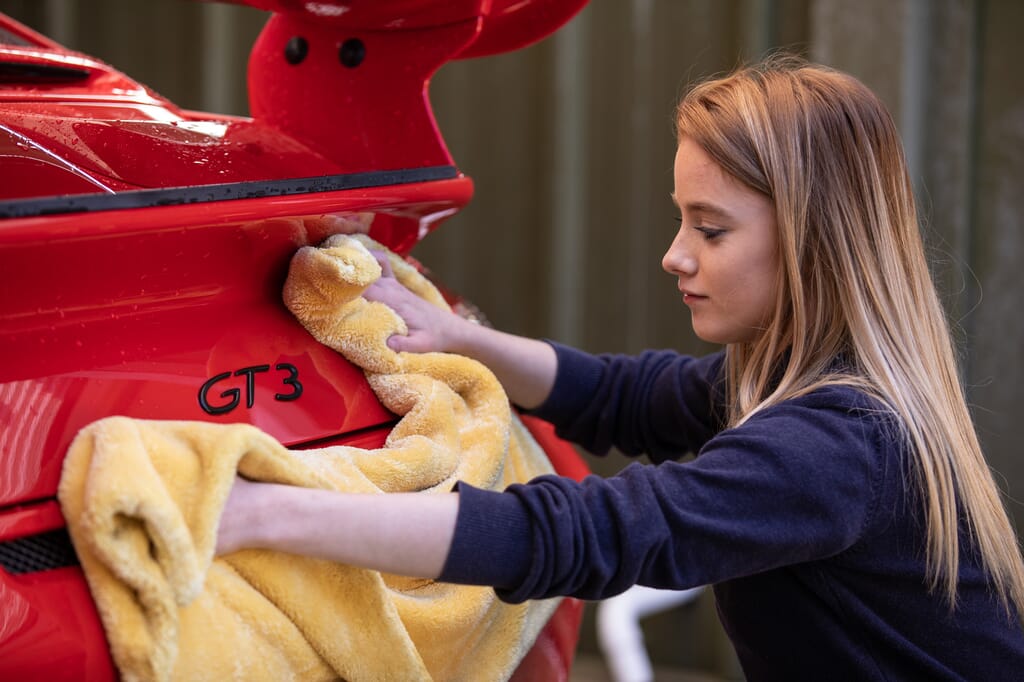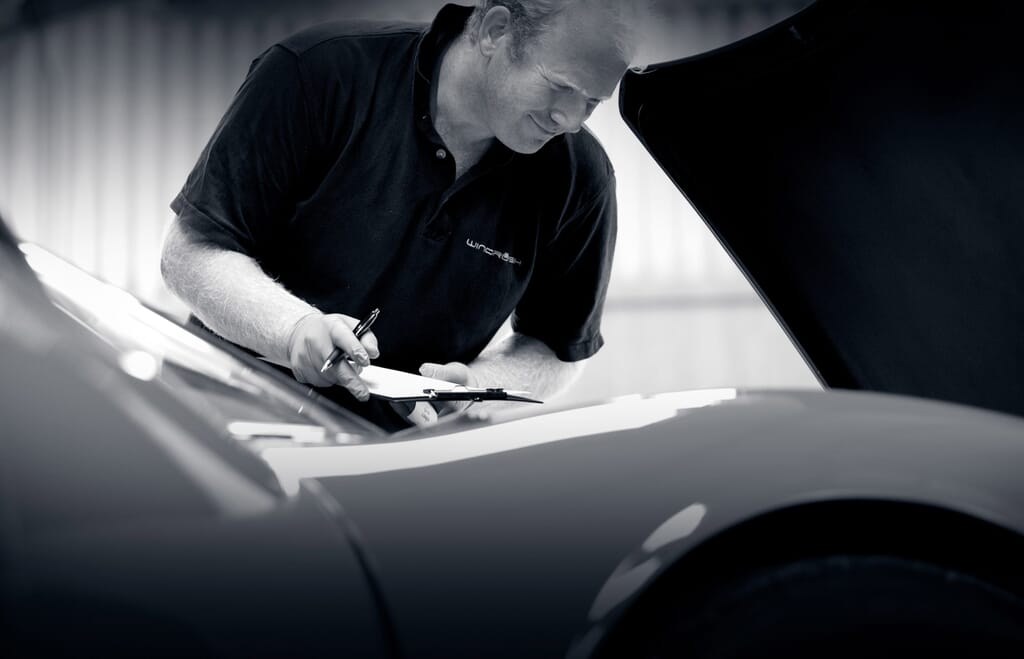
Whether you’re pleasing yourself or attempting to attract a buyer, a quality vehicle deserves a deep clean. Here’s the Windrush guide on how to properly wash your car.
The tools of car-washing have moved on from the hosepipes and sponges of your childhood. If you care enough about your pride and joy to find the best example, make the investment and adhere to the recommended maintenance programme, it is surely worth buying the equipment to achieve the professional finish that ensures admiring glances and might attract higher auction bids.
If you’re wondering how to properly wash a car, rest assured that you don’t need expensive kit. A few key purchases will have your vehicle gleaming like new, and if you entrust your car to Windrush’s secure car storage services we will keep it that way. Before you learn the best washing technique – or sit back and relax as we take care of everything with our washing, drying and valeting services – here’s your shopping list.
#1. Pressure Washer
Not essential, but highly recommended, a pressure washer will blast stubborn debris from the car before handwashing begins. You have a choice between the cheaper ‘cold’ washers that spray tap-temperature water, or the more expensive ‘hot’ models that heat it up with an internal boiler. Follow your budget, but if you’re wondering how to properly wash a car before a sale or long-term car storage, our experts recommend the latter, for a more effective and pleasant cleaning process, especially in the colder months. Just be aware: while some hot washers can reach temperatures of 100 degrees-plus, 45 degrees is ample to soften grime without damaging your paint finish.
#2. Pair of lambswool wash mitts
The trusty yellow sponge might be an icon, but it can also trap dirt and grit, scratching paintwork in the process. At Windrush, we use and recommend a lambswool wash mitt (don’t settle for cotton or a synthetic blend). This unique material draws dirt particles into the deep pile, well away from the painted surfaces being washed. Plus, because this isn’t matted wool, the dirt easily rinses out. Meanwhile, the thick pile holds a huge amount of soapy water to lubricate and protect paint from potential swirls. When you bring your vehicle to Windrush – for long term car storage or our other services – you’ll see our specialist car washers using two mitts: one just for the upper body, and the second only for the really grimy jobs like sills and lower vehicle sections.
#3. Pair of deep buckets
Two is the magic number here. You need the first bucket for wash suds and the second for the all-important rinse, which removes any grit particles that have been drawn into the deep pile of your wash mitt – instead of dragging them all over your vehicle. Translucent buckets are best, so you can see at a glance when dirt is building up and the water needs replacing. Meanwhile, if you’re wondering how to properly wash a car without risking scratches, the connoisseur’s choice are grit guards: a specialist mesh inserted in the bottom of both buckets, locking any debris safely into a baffled section.
#4. Pair of wheel brushes (large/small)
Most modern cars have alloy wheels: great for impressing when clean, but a slight nuisance when removing brake dust. To make the process easier, you’ll need two good-quality wheel brushes in varied sizes: a large one for the main face and a smaller, thinner type for between the spokes and the back of the wheel. Don’t be tempted to use your wash mitt on your wheels, unless you buy a dedicated one solely for this purpose. At Windrush Car Storage, our specialist car washing service uses four wheel brushes to achieve the best results, with size, shape and softness depending on the wheel type.
#5. Good quality drying towel
We’re often asked how to wash a car in winter but drying your vehicle with a premium towel afterwards is just as important, ensuring a beautifully smear and spot-free finish, with no moisture left behind. In fact, all year round, the soft and ultra-deep pile will be far more absorbent than traditional leather, capable of absorbing many times its own weight in water, while the ultra-soft fibres significantly reduce the risk of damaged paint. A generous-sized drying towel will let you dry most cars without needing to wring it out even once – and is machine-washable for safe use, time and time again.
#6. Shampoo and alloy wheel cleaner
Don’t be tempted to scrimp with paintwork-damaging household detergents. If the priority is how to properly wash a car, then a serious car wash shampoo is a must, especially when paired with a conditioner containing a simple rinse aid. Most car product brands sell both of these, and for just a few pounds, you can clean your vehicle’s surfaces gently, without stripping wax or paint sealant. Shampoo is fine for wheels, too, if you regularly wash your vehicle. But if your alloys have been a little neglected lately, invest in a good-quality, dedicated wheel cleaner: it’ll be much better for removing baked-on brake dust. If you go this route, choose a non-acidic cleaner, which will be kinder to your wheel surfaces: the label should give you the information you need.
#7. Rely on Windrush for washing, drying and valeting/detailing
For many of us, washing our car is a pleasure, representing a chance to spend a little time nurturing our vehicle and even spotting issues that might be missed during the day-to-day. But when life gets busy, turn to Windrush for our specialist washing, drying and valeting/detailing services. Whether your vehicle is with us for a dedicated deep clean, or long-term car storage, we’ll give it the full treatment inside and out – and return it to you ready to impress.
To learn more about Windrush secure car storage and our other services, get in touch today.




